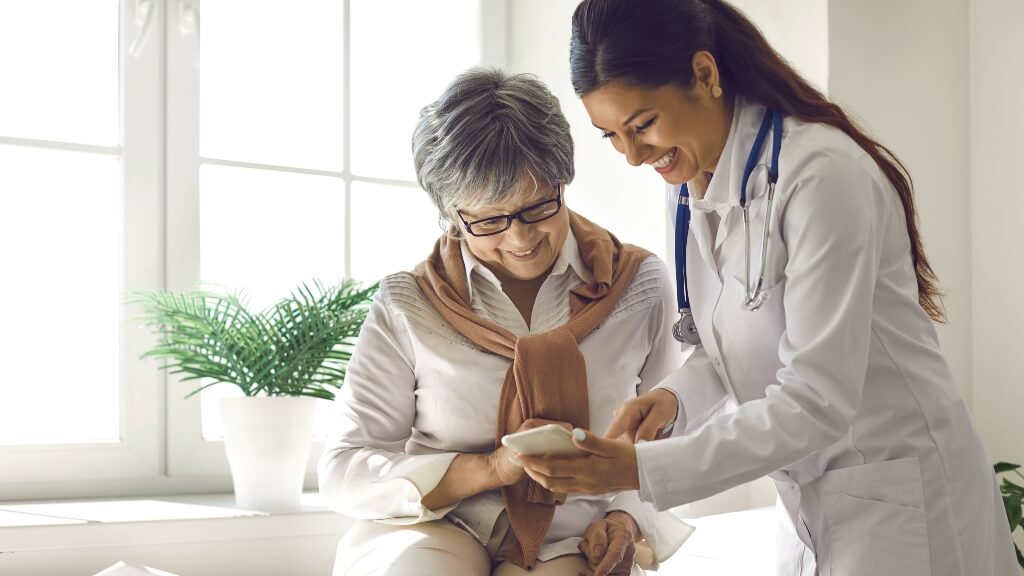Telecare of the future in an ageing country
Telecare is increasingly necessary if older people are to live independently at home for as long as possibleThe high human and financial costs of telecare are forcing municipal councils to think of new ways of maximizing their resources
A start-up supported by the UOC using technology to link older people to their families 24 hours a day and send alerts in emergencies has won an awarad for the most innovative social and healthcare initiative

The help older people receive from their families to maintain their independence is essential for meeting the costs in human and financial resources in an increasingly ageing country. At present, 21% of Spain's population is over 65 years old, and according to estimates by the Spanish National Institute of Statistics, this figure will reach 30% by 2030. Meanwhile, the number of people over 80 years of age has doubled in the last 10 years.
According to the World Health Organization, most people prefer to grow old in their homes, surrounded by their possessions and loved ones. This is beneficial for their health, as staying in their community helps them maintain their social networks and ties. However, older people face challenges to living independently.
According to data from a scientific study published in the peer-reviewed Spanish Journal of Geriatrics and Gerontology, one in three people over the age of 65 in Spain experience at least one fall a year, and this figure can reach 50% among those over 80 years of age. Empowering older people with fall alert and detection systems is therefore essential for building confidence in people who wish to live alone.
With this in mind, a smart watch, created by a graduate of the Universitat Oberta de Catalunya (UOC), that enables older people to live in their homes independently has been considered the most innovative digital initiative in the social and healthcare field by the DigiCanvis Observatory of the Open Administration of Catalonia. According to the Observatory, which aims to let local administrations share the digital transformation projects that have been most successful in their areas, this watch offers a new model for telecare that facilitates autonomy for older people, and maximizes the resources of local councils.
Unlike the traditional pendant model with a red button, which communicates with social services when the user presses it, the SeniorDomo watch "uses cutting-edge technology to detect possible problems and provides constant contact with the family. So when there is an emergency, the person can alert their son, daughter or a relative, and talk using a hands-free system. The watch issues this alert automatically if it detects a risk situation," said one of its creators, Ángel Puertas, holder of an Executive MBA in Entrepreneurship and Innovation from the UOC, and one of the past winners of the SpinUOC entrepreneurship programme with this project.
The success of SeniorDomo
SeniorDomo monitors the user's physical movements, vital signs and location, and is able to detect unusual results, such as changes in the pulse rate, disorientation and sudden movements due to falls or fainting. It also lets the user make calls in less than 24 seconds, so that the person can receive help or attention from their family as soon as possible.
The telecare watch, which has an appealing appearance similar to a fitness wristband, is being adopted by an increasing number of municipal councils and companies in the sector. It is already being used in 4,000 homes in Spain, and the number of families using it has increased more than sevenfold since the end of 2021.
It is also being exported to Italy, the European Union country with the largest percentage of the population over 65 years of age. There are now 200 families using its services in Italy, and this figure is expected to increase in the coming years.
SeniorDomo is supported by the UOC through Hubbik, the university's platform to promote entrepreneurship, and it receives funding from Invergy and Barcelona Activa. It is currently based in Barcelona, and has a team of more than 20 people.
This research by the UOC supports Sustainable Development Goal (SDG) 3 (Good Health and Well-being).
Press contact
Rubén Permuy
rpermuy@uoc.edu
+34 659 05 42 39
UOC R&I
The UOC's research and innovation (R&I) is helping overcome pressing challenges faced by global societies in the 21st century by studying interactions between technology and human & social sciences with a specific focus on the network society, e-learning and e-health.
Over 500 researchers and more than 50 research groups work in the UOC's seven faculties, its eLearning Research programme and its two research centres: the Internet Interdisciplinary Institute (IN3) and the eHealth Center (eHC).
The university also develops online learning innovations at its eLearning Innovation Center (eLinC), as well as UOC community entrepreneurship and knowledge transfer via the Hubbik platform.
Open knowledge and the goals of the United Nations 2030 Agenda for Sustainable Development serve as strategic pillars for the UOC's teaching, research and innovation. More information: research.uoc.edu.
Experts UOC
Press contact
-
Editorial department
